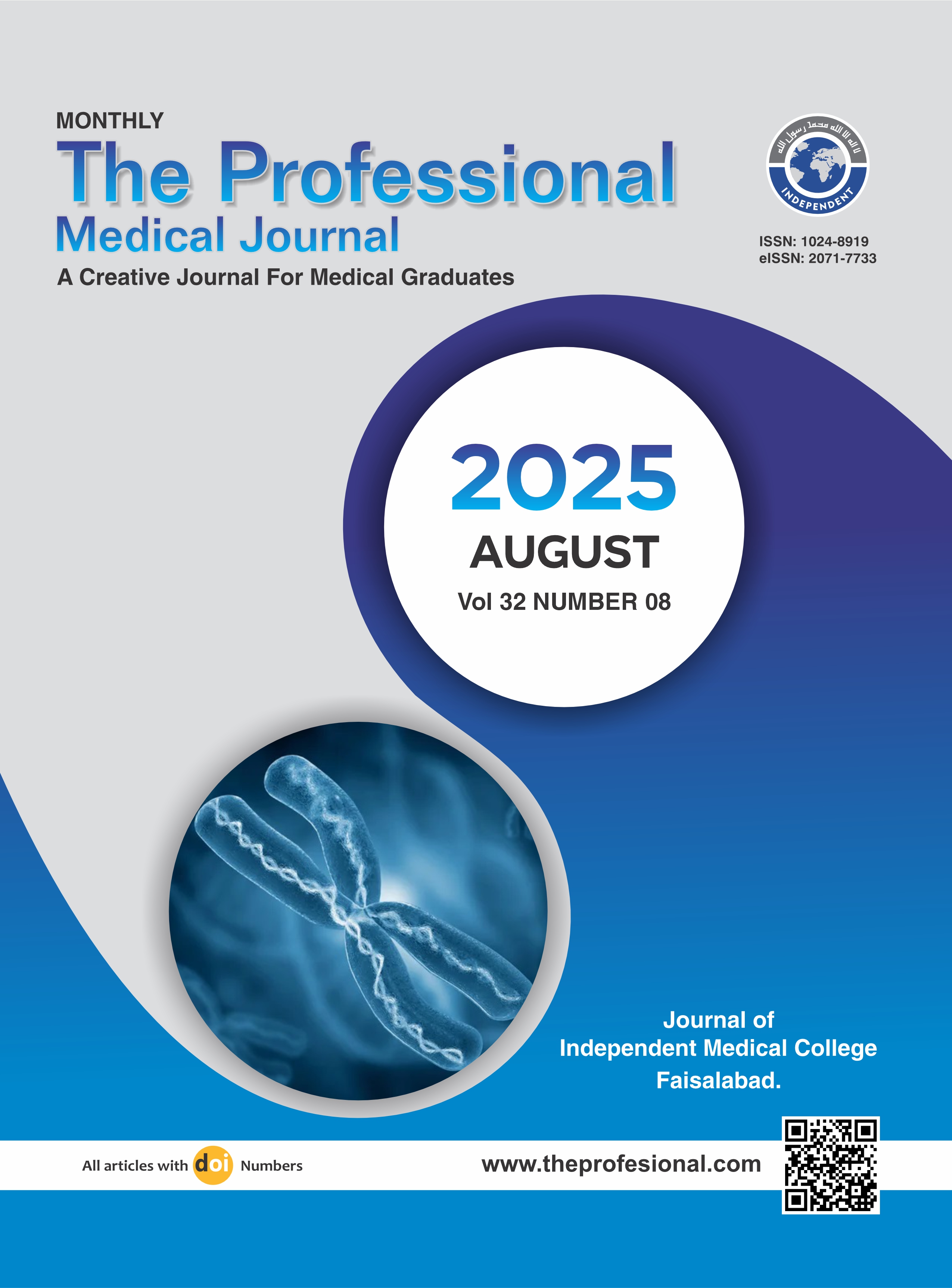Lumbar disc herniation: Outcomes of Unilateral Bi-Portal Endoscopic Technique: At a Tertiary Care Hospital, Pakistan.
DOI:
https://doi.org/10.29309/TPMJ/2025.32.08.9715Keywords:
Lumbar Disc Herniation, Oswestry Disability Index (ODI), Unilateral Bi-portal EndoscopyAbstract
Objective: To measure the clinical outcome of unilateral bi-portal endoscopic technique for lumbar disc herniation. Sudy Design: Prospective Cohort study. Setting: Department of Orthopaedics & Spine Centre, Ghurki Trust Teaching Hospital, Lahore. Period: October 01, 2023, to December 30, 2024. Methods: The study included 60 patients between the age of 20-60 years diagnosed with lumbar disc herniation and lumbar canal stenosis. All the p-values ≤ 0.05 were considered to be statistically significant. Results: In our study, the majority, 39 (65.0%), were male patients with a mean age of 40.94±8.76 ranging from 29 to 60 years. The mean ODI score significantly decreased among patients. 83.3% of patients were very satisfied, indicating no pain, no restriction of mobility, and a return to regular work and level of activity; 10.0% of patients reported good levels. 3.3% of cases were found to be fair, and 3.3% of cases were found to have poor satisfaction levels. Conclusion: Our results showed that this technique is as safe and effective as other MIS techniques, and most of our patients showed significant improvement after surgery. However, a comparison of UBE and other MIS techniques must be assessed to demonstrate this technique's effectiveness.
Downloads
Published
Issue
Section
License
Copyright (c) 2025 The Professional Medical Journal

This work is licensed under a Creative Commons Attribution-NonCommercial 4.0 International License.


